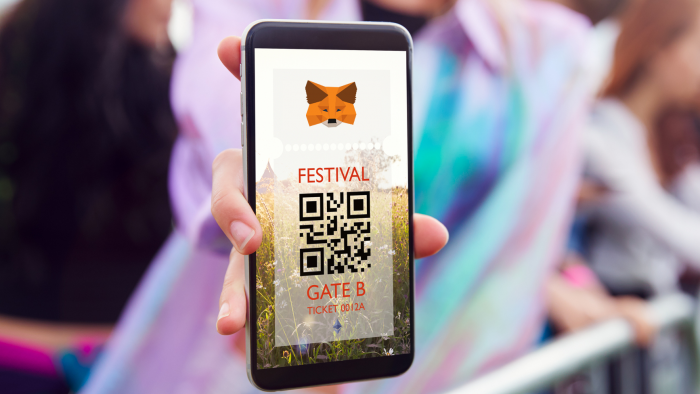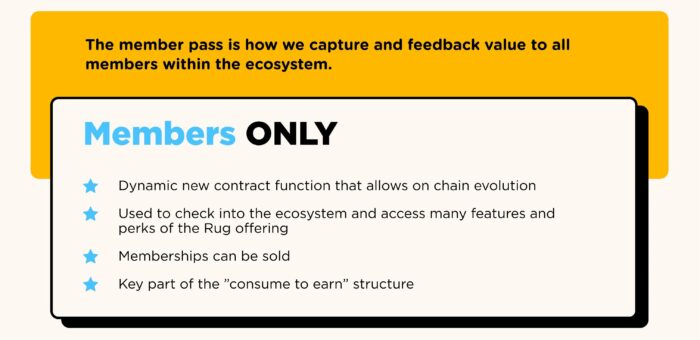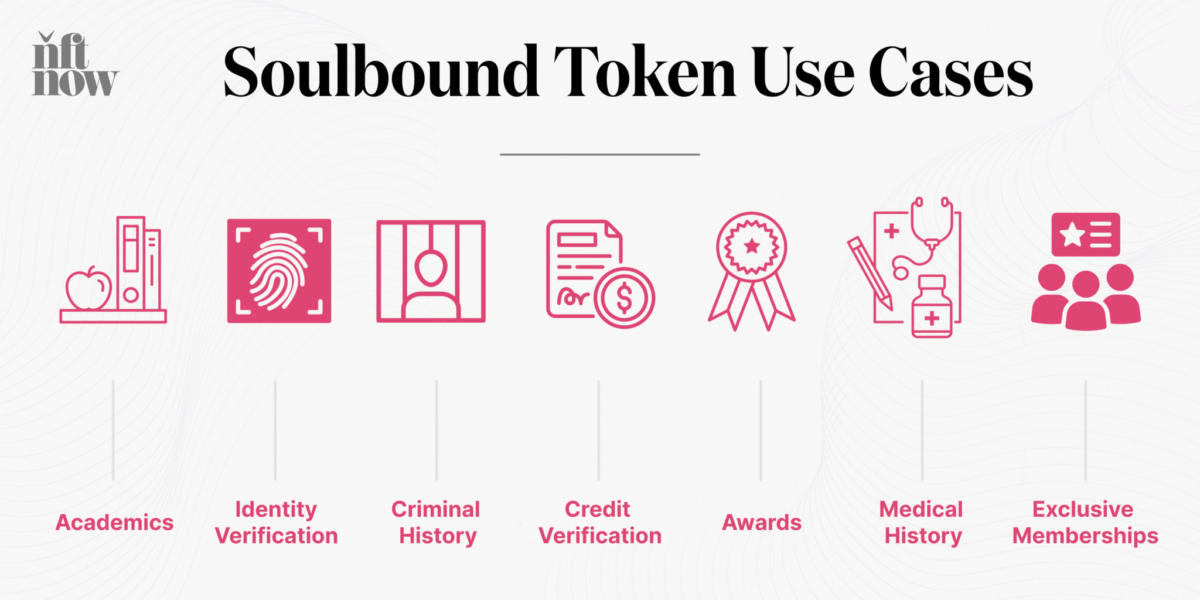A lot has changed in the NFT space over the past few years. While 2021 saw non-fungible tokens absolutely explode, 2022 saw Web3 accelerate the maturation of the NFT space thanks to a bear market. Sure, artists still found ways to make a living, and NFT collectors evolved into prominent Web3 builders, but the wild west that was the NFT market cooled significantly.
This is of course not a bad thing. On the contrary. While numerous investors and influencers quickly went quiet when the million dollar profit stopped rolling in, the NFT space as a whole was propelled forward. Collectibles and large-scale PFP projects that gripped the market began to decline, and other oft-overshadowed use cases began to take off.
But we’re not just talking about Sound.xyz music NFT secondary sales exceeding $5 millionor photography NFT editions go viral. While these are undoubtedly big wins for artists, advances in blockchain technology and a crossover from Web2 to Web3 have helped solidify some robust NFT use cases that have the potential to change the metaverse as we know it. . Going forward, these growing sectors will undoubtedly be worth keeping an eye on.
Ticketing and proof of participation
Perhaps one of the most underrated sectors of the NFT market is NFT ticketing. Considered by many to be a major asset to the future of live events, NFT ticketing is exactly what it sounds like: tickets in the form of an NFT that live on a blockchain and act as entrance passes to any live (or even virtual) event.
NFT tickets allow card issuers and recipients to benefit in a variety of ways. Publishers can maintain a more in-depth record of attendance by using the blockchain as a ledger while also communicating with ticket holders in a new and innovative way through NFTs. Publishers can send out notices, organize surprise giveaways, create token-gated sites and services, and more easily by collecting data associated with holders of a specific NFT ticket.

On the other hand, event attendees who do not issue NFT tickets can also be rewarded afterwards. POAP, the Proof of Attendance Protocol, allows users to create and issue commemorative badge NFTs that can provide many of the same utilities as NFT ticketing. Users often only need to scan a QR code or enter a specific phrase to collect a POAP, making the barrier to entry considerably low and accessible to those not versed in blockchain technology.
While NFT ticketing and POAPs may just seem like a nice incentive for event attendees, they’ve still proven useful for project founders to keep track of early supporters. It wouldn’t be a stretch to say that both NFT tickets and POAPs are helping to change the way we think about fandom in Web3.
Membership passes
While it is true that NFT based memberships grew and developed along with PFP projects, they have since become their own unique sector of the NFT market. Usually used by brands and programs, these types of NFTs act as access keys to unlock incentives and rewards for those who have them. Oftentimes, NFT memberships are enforced through “token-gating,” which uses blockchain technology to verify ownership of an NFT and grant holders access to all member-exclusive benefits on offer. This can be implemented in Discord servers, at in-person or virtual events, and more.
One of the earliest examples of NFT memberships is the Bored Ape Yacht Club. Just by owning a BAYC NFT, holders gain access to merch drops, music festivals, subsequent NFT releases, and much more. Projects like LinksDAO, LoudPunx, and Flyfish Club remain some of the most ambitious membership efforts, while platforms like Friends With Benefits and OneOf have become archetypes for organizations looking to launch membership cards.
Some NFT efforts even went beyond the idea of a simple membership card, bringing shared ownership and voting into the mix. Take Rug Radio, for example. Made by prominent influencer and builder Farokh to be a decentralized Web3 media platform should be the ethos of the project Through the community and for the community as a platform owned by its consumers. That’s why Rug Radio has issued Membership Pass NFTs, which give their holders the ability to vote on proposals and participate in important decisions.

Similarly, ventures such as the Now Pass have continued to rethink the idea of membership by encouraging collectors to join shared ownership efforts. All in all, the concepts of community and membership continue to evolve thanks to NFTs, which act as one of the most robust use cases for Web3 overall.
Soul Bound Tokens
Soulbound Tokens are NFTs that are non-transferable, making them ideal for managing permanent records. Rather than securing fragile paper records to pass down the generations, SBTs could give us a better way to verify important information on the blockchain.
But taking over paper documents is just one function of these NFTs, which were initially proposed by Ethereum co-founder Vitalik Buterin. Designed to function as a comprehensive set of tools for online users to maintain and protect their identities, if SBTs are launched as planned they will significantly impact our daily lives. Through SBTs, medical records, academic achievements, alumni status, employment history, criminal records, and everything in between can be minted as an NFT with immutable and non-transferable ownership.

While it is true that SBTs may not be possible on a large scale until a fully decentralized society can be achieved, evidence is mounting that they could become a reality in the very near future. But where? Besides Buterin himself alluding to the possibility that they could have been implemented by the end of 2022, companies like Moonpay have already announced efforts in a similar vein to SBTs. Perhaps it’s only a matter of time before we see the first real-life use case.
Physical x digital
In 2022, the NFT space witnessed the emergence of “phygital” goods. Characterized as a fusion of physical and digital, phygital has built a new layer on the concept of digital ownership, allowing artists and developers to convert their physical creations into NFTs, and vice versa. Although the term “phygital” itself has garnered opposition due to the abrasive phonetics and basic portmanteau nature, there is no denying the popularity of such products.
Phygital goods exist in various forms. From toys to collectibles and even more traditional forms of art such as sculpture and paintings, the line between physical and digital continues to blur for Web3 creators. Still, wearables are one of the most popular use cases to emerge from this new market sector. This is perhaps best illustrated by companies like 9dcc and RTFKT, which continue to produce NFT-powered shoes, shirts, and other fashion items.
While phygital goods sound a bit futuristic, digital goods wearables have been around for a long time through video games like Fortnite. In fact, Fortnite skins were what inspired 9dcc’s founder, Gmoney, to venture into digital collectibles in the first place, as he saw the potential of digital ownership and how important it is for that potential to be shared by future generations. is understood. If investment giants like him and fashion powerhouses like Nike keep an eye on phygital, the rest of Web3 would be smart to do the same.
Artificial intelligence
Like it or not, artificial intelligence is here and seems to be here to stay. From tools like ChatGPT that are proliferating in almost every industry to AI-generated art becoming a hot and controversial topic among online communities, the AI boom we are experiencing is similar to, if not bigger than, the initial NFT boom of 2021 .
Yet AI will almost undoubtedly have a greater reach and impact on society at large than even NFTs can muster at the moment. This of course also includes the impact on Web3. In fact, plenty of prominent artists in the NFT space are already using AI collaboration in their workflows. But it’s not due to the latest AI explosion, but rather the digital nature of the NFT space in general, where developers, artists and programmers converge. So why should we monitor AI in the future?

Well, because it has progressed so exponentially and significantly in just a year. With the advent of DALL-E, ChatGPT, Midjourney and other tools, the ethics of creating and selling AI art has been called into question. While many critics fear the new paradigm of AI art, others have embraced it as inevitable. Yet AI-created work currently lacks the “human authorship” necessary to grant rights intended to protect the artist. A slippery slope, indeed.
What’s next?
Independent of profit and speculation, the use cases mentioned above are undeniably prominent within the NFT space as we enter the next market cycle. While open editions and memecoins may have been at the center of their respective 15 minutes of fame, NFT ticketing, membership passes, SBTs, phygital goods, and AI collaboration have progressed undisturbed by the hype cycles and controversies that often distract residents from the metaverse. .
Sure, some could die out, others could potentially completely dominate the market, or maybe an unseen force could appear and shift the ecosystem even further. Still, each of these examples of NFT innovation has certainly helped, if only in a small way, to move the conversation about the usefulness of blockchain technology in modern society from niche to mainstream. That alone is a big win for Web3.

